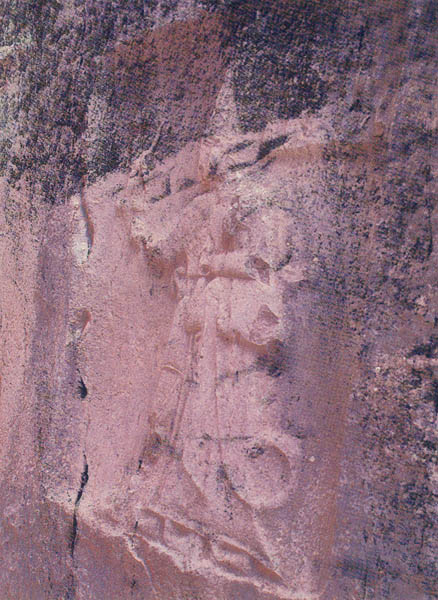Image Details

Hershel Shanks
On the wall opposite the linked gods, the towering mountain god Sarrumma embraces Tudhaliya IV (shown here, compare with drawing). Cupped in Sarrumma’s right hand is the hieroglyph for “god” and a male torso, the significance of which is not known. In the upper right corner of the relief are a winged sun and the hieroglyphic symbols for “great king,” “emperor” and Tudhaliya’s name.
The reliefs at Yazilikaya were carved shortly after the peace treaty with Egypt in 1259 B.C.E. The Hittite empire reached its zenith in the 14th and 13th centuries B.C.E., extending as far south as modern-day Lebanon and Syria. Despite his failure to obtain a victory over the Hittites in the crucial battle with them at Kadesh on the Orontes River in 1275 B.C.E., Pharaoh Ramesses II told a story of a great Hittite defeat in which Hittite horses and chariots were drowned.
